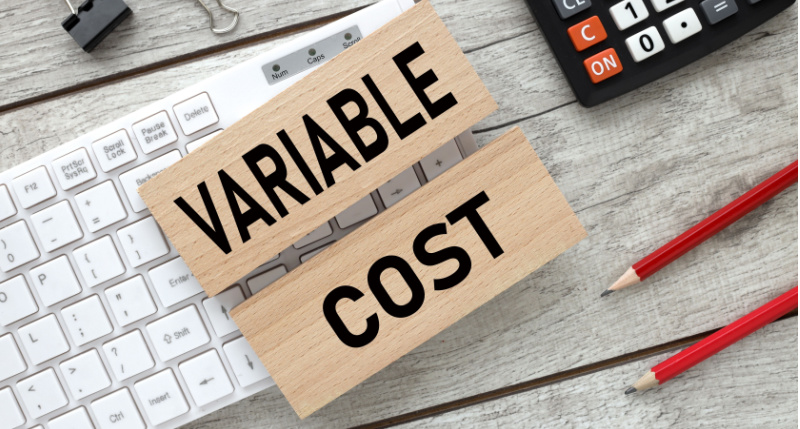If you want to optimize operations and boost profitability, understanding cost management is a must. One of the more important aspects of cost management is variable cost, as it directly impacts a manufacturing company’s bottom line.
Understanding variable costs helps you make more informed decisions.
In this article, we’ll answer two common questions:
- What are variable costs?
- Why is variable cost analysis important?
Let’s begin!
What are Variable Costs?
A variable cost is an expense that changes in proportion to production or sales volume. This means as production increases or decreases, so does the total cost.
For example, if a company produces more goods, variable costs will rise, and if production decreases, so will the variable cost.
Here are a few examples of variable costs:
- Raw materials
- Direct labor
- Utilities
- Packing and shipping
- Cost of goods sold (COGS)
Why is Variable Cost Analysis Important?
Variable costing data provides valuable insights into the interworkings and financial health of the company. It’s used to analyze and optimize expenses, make pricing decisions, and improve profitability.
Let’s take a closer look at some of the reasons why variable cost analysis is important:
Variable Costs Help Determine Pricing
Variable costs are critical in determining pricing because they directly impact the cost of producing a product. This opens the door for companies to set prices that not only cover the cost of production but also generate a profit.
There are multiple pricing strategies and concepts that require the calculation of variable costs, including:
- Cost-plus pricing method
- Break-even analysis
- Competitive pricing
- Price flexibility
- Product mix analysis
- Seasonal or volume pricing
By considering variable costs when setting prices, manufacturing businesses can be sure they:
- Cover production expenses
- Achieve desired profit margins
- Remain competitive in the industry
- Optimize profitability
Variable Costs are an Integral Part of Budgeting and Planning
Variable costs play a critical role in creating financial forecasts, making informed business decisions, and ensuring the financial health of a company. This is done through:
Accurate cost projections
Because variable costs directly correlate with production and sales, they are essential for precise cost projections. With accurate cost projections, companies can set more realistic budgets.
Sensitivity analysis
Variable costs are sensitive to fluctuations in sales and production levels. Conducting sensitivity analyses allows businesses to measure how changes in levels affect the overall costs. This enables scenario planning and risk assessment.
Resource allocation
Proper resource allocation is vital for efficient production. Knowing the variable costs helps allocate resources based on potential returns and profits.
Besides these, variable costs impact many other areas related to budgeting and planning, providing essential insights to navigate business uncertainties.
Variable Costs Determine the Break-Even Point
The break-even point determines the level of sales needed to cover all of the costs of production; fixed and variable costs. If a company is at the break-even point, they are neither making nor losing money.
Accurate variable costing plays a role in helping the company determine an accurate break-even point enabling them to set profitable prices.
Variable Costs Determine Margins and Net Income
Variable costs are an integral part of determining margins and net income.
To give you the best explanation of how they tie in, take a look at some of the formulas below:
Gross Profit Margin = (Total Revenue - Cost of Goods Sold) / Total Revenue
- Note that the cost of goods sold includes all of the variable costs used in producing a product.
Contribution Margin = Sales Revenue - Variable Costs
- The higher the contribution margin, the more money available for fixed costs and net income.
Net Income = Total Revenue - (Fixed Costs + Variable Costs)
- If variable costs increase, net income will decrease, assuming revenue stays constant.
- If variable costs decrease, net income will increase, assuming revenue and fixed costs stay constant.
Understanding how variable costs impact margins and net income allows manufacturing companies to optimize profitability.
Variable Costs Impact a Company's Expense Structure
Because of their direct relationship with production and sales volume, variable costs have a significant impact on a company’s expense structure. Understanding this impact is essential for effective cost management and financial planning.
- Flexibility and adaptability
- Variable costs make the company’s expense structure flexible and adaptable to changing business conditions. As variable costs change based on activity, the company can make adjustments to reflect market demands, economic changes, or shifts in customer preferences.
- Inventory management
- Good inventory management helps optimize variable costs and control expenses. Too much inventory can create higher variable costs. For example, storage, handling, and depreciation. On the other hand, low inventory levels can result in resources not being used properly.
- Cost control measures
- Reducing variable costs without compromising quality makes a more efficient and positive expense structure.
Understand Your Variable Costs for a More Profitable Business
Variable costs play an integral role in making many of the important decisions for a business. Understanding how variable costs impact the following areas leads to better-informed decisions and improved profitability:
- Help determine pricing
- Aid in budgeting and planning
- Determine the break-even point
- Determine margins and net income
- Impact expense structure
For manufacturing companies, each of these is essential for a successful business. But again, at the root is understanding and accurately calculating variable costs.
The good news is there are powerful tools, like Katana, that were created to help manufacturers and the accountants that serve them calculate variable costs correctly.
.png?width=150&height=63&name=TWRlogo-regmark_blueblack%20(1).png)
.png)










Do you have questions about this article? Email us and let us know > info@woodard.com
Comments: